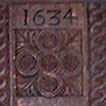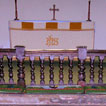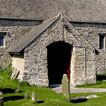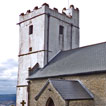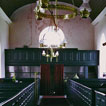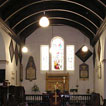Stuart and Georgian Parish Churches
When it comes to discussing the history of church building in Britain, more often than not the 17th and 18th centuries tend to be overlooked. But there is plenty of evidence that people in South Wales went on maintaining their parish churches, giving them a makeover from time to time and sometimes undertaking quite extensive building projects, even though the results were usually less showy than some medieval or Victorian efforts. Some of this work was a reaction to new ways of doing things: for example, a number of churches in Glamorgan rebuilt their towers in the 17th century, possibly as the result of the new fashion of ringing bells mounted on a wheel, which puts much more strain on the fabric than the older method where the bells did not have to be rung so vigorously.
One product of the Reformation, the adoption of the parish as a unit of local government, had become firmly rooted, but the theological disputes were still being worked out. Puritans who wanted an extreme form of Protestantism were in conflict with the moderates. One point of conflict was over having a barrier around the altar to ensure that it would not be treated too casually. Under Charles I, Archbishop Laud promoted the use of altar rails, of which many fine 17th and 18th century examples can be seen in South Wales. Other furnishings that may reflect this conflict are the fonts. Some of those in Monmouthshire have dates that show they were carved after the Restoration, suggesting that the medieval fonts had been destroyed during the Commonwealth by Puritan incumbents who opposed infant baptism. However, both schools of thought approved of long sermons designed to teach the congregation about their faith. Pulpits, and pews where the listeners could sit for long periods at a time, were now standard in all churches, though very few are now left from this period. The churchwardens had the responsibility of allocating pews, which they did according to social hierarchy. This could lead to quarrels if parishioners thought they had been slighted by the new arrangements. More seating was usually provided in a gallery at the west end of the church, of which very few now remain.
When it came to building, much of the new work in country churches was in a plain Tudor style. Dated examples, especially in Glamorgan, show that this style, which is conventionally thought of as being 16th century, continued to be used right up into the middle of the 18th century. By the end of this century, large pointed windows were the norm: this type of architecture would later be derided as 'churchwarden style'. However, from the beginning of the 18th century, rather grander parishes like Chepstow might choose something more fashionably Georgian, and there are even some churches where the architect chose something inspired by the Middle Ages, like St Mary's in Monmouth where we know from documents that the spire was added in 1743 in Gothic style.
